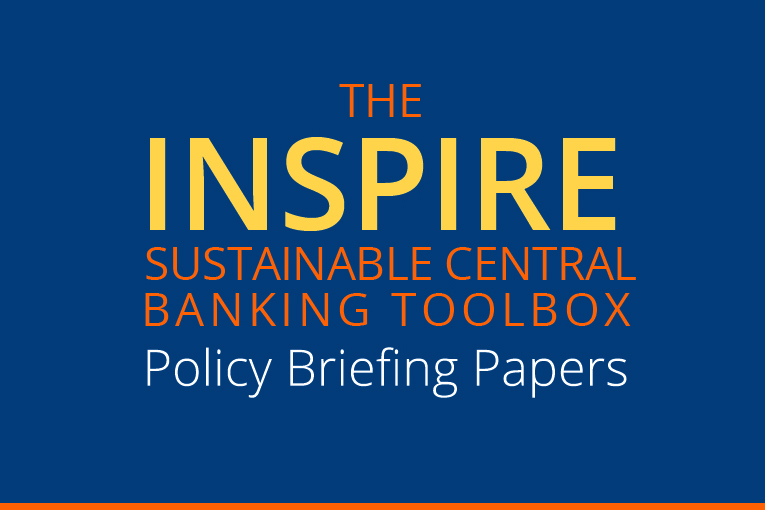Greening collateral frameworks

Download
INSPIRE Central Banking Toolbox – Policy Briefing no. 7
Central bank collateral frameworks play a powerful role in contemporary market-based financial systems, affecting demand for financial assets and access to finance. However, existing collateral frameworks suffer from a carbon bias: they create disproportionately better financing conditions for carbon-intensive activities.
This paper highlights the need to green the collateral frameworks and explores how central banks can incorporate environmental criteria into these frameworks.
Main messages
- Existing central bank collateral frameworks lack environmental considerations. This omission has the effect of favouring assets that support polluting activities, thereby exacerbating the environmental crisis.
- Environmental criteria can be incorporated into collateral frameworks using two approaches: (i) the environmental risk exposure approach and (ii) the environmental footprint approach.
- The environmental risk exposure approach suggests that credit assessments should be modified to reflect environment-related financial risks. It assumes that environmental risks are exogenously determined and cannot be affected by banks, so the focus is on protection from such risks.
- The environmental footprint approach, on the other hand, looks to contribute directly to the decarbonisation of financial markets, for example by penalising polluting assets and supporting environmentally-friendly assets. It considers that central banks’ decisions can affect environmental outcomes and systemic environment-related financial risks.
Recommendations
- The rules governing collateral frameworks have significant implications for the financial system. Making collateral practices greener is therefore highly important for transforming finance in the age of environmental collapse.
- Central banks should design the greening of their collateral frameworks based on the environmental footprint approach. This approach has key advantages: (i) it allows central banks to play a more active role in the fight against the environmental crisis and to contribute to the reduction of systemic financial risks; (ii) it faces fewer practical challenges than the alternative environmental risk exposure approach; and (iii) it does not penalise companies that are exposed to physical risks.
- At the same time, central banks need to continue to identify and assess environment-related financial risks. They should not, however, use risk exposure as the sole criterion for greening collateral frameworks.
Central banks have a crucial role to play in developing a framework that will accelerate the collection and harmonisation of environmental data associated with financial assets. This will allow the greening of collateral frameworks to move beyond the assets of non-financial corporations.
This paper is part of the INSPIRE Sustainable Central Banking Toolbox, which is designed to support central bankers and financial supervisors in calibrating monetary, prudential and other instruments in accordance with sustainability goals as they address the ramifications of climate change and other environmental challenges. The papers have been written and peer-reviewed by leading experts from academia, think tanks and central banks and are based on cutting-edge research, drawing from best practice in central banking and supervision.

